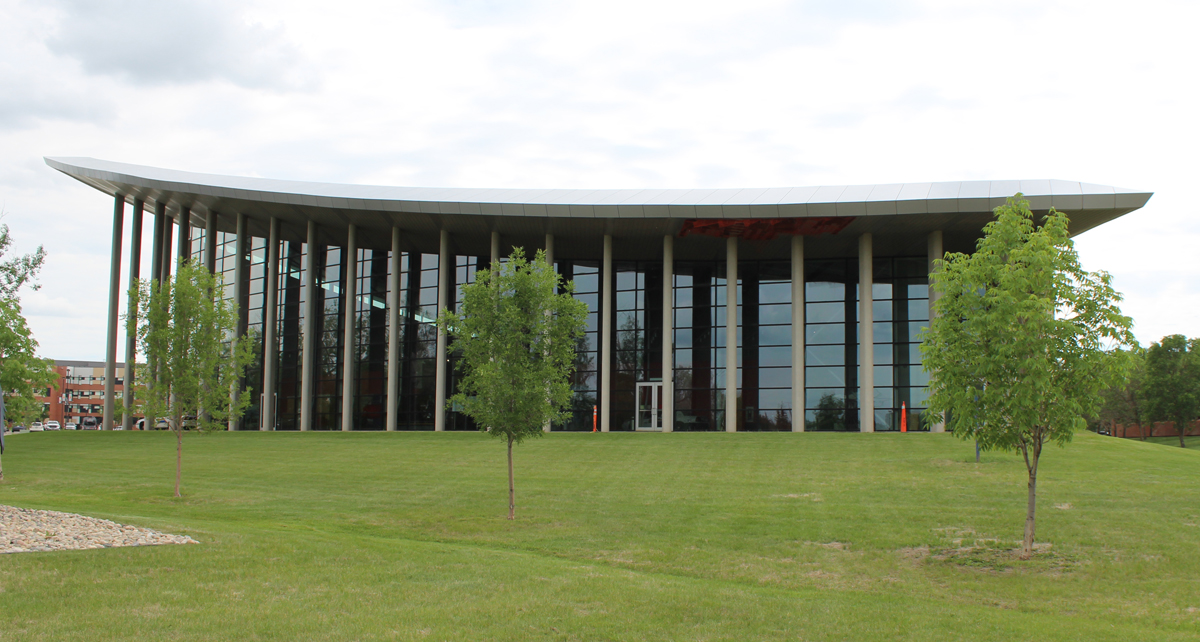Follow us on Facebook!
Besides being the capital of the province of Saskatchewan, Regina is also the home of the Royal Canadian Mounted Police Academy, also known as Depot Division. Every Mountie in Canada is trained at this facility which covers several acres. Mounties have been trained there since 1885 and the place is steeped in history.
In 2007, the RCMP Heritage Centre was opened (shown at top). This 70,000 square foot building which sits on the front lawn of Depot Division was designed by noted architect Arthur Erickson. It is a museum featuring many artifacts relating to the history of the RCMP and the Canadian West.
We visited the Centre, located on Dewdney Avenue on Regina’s west side, in June 2018. We were in town to visit our son who had just moved there. The three of us arrived around 11:30 AM and discovered we were in time to take in the Sergeant-Major’s Parade. The tram left at 12:15 so we registered and spent a half hour checking out the museum before departure.
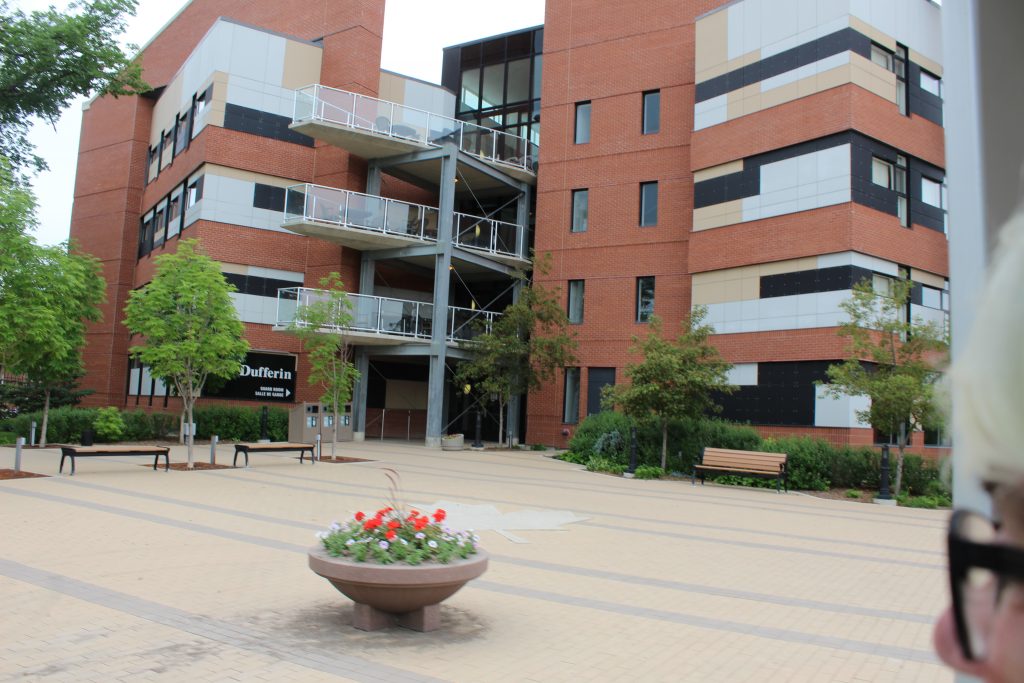
The tram does a complete circuit of the training facility, giving you good idea of the size and scope of the place. We first passed the Dufferin Building where new Mountie recruits live during their six months sojourn at the academy. Later in the museum, we would see a mock-up of some of the barracks to see how these new recruits lived.
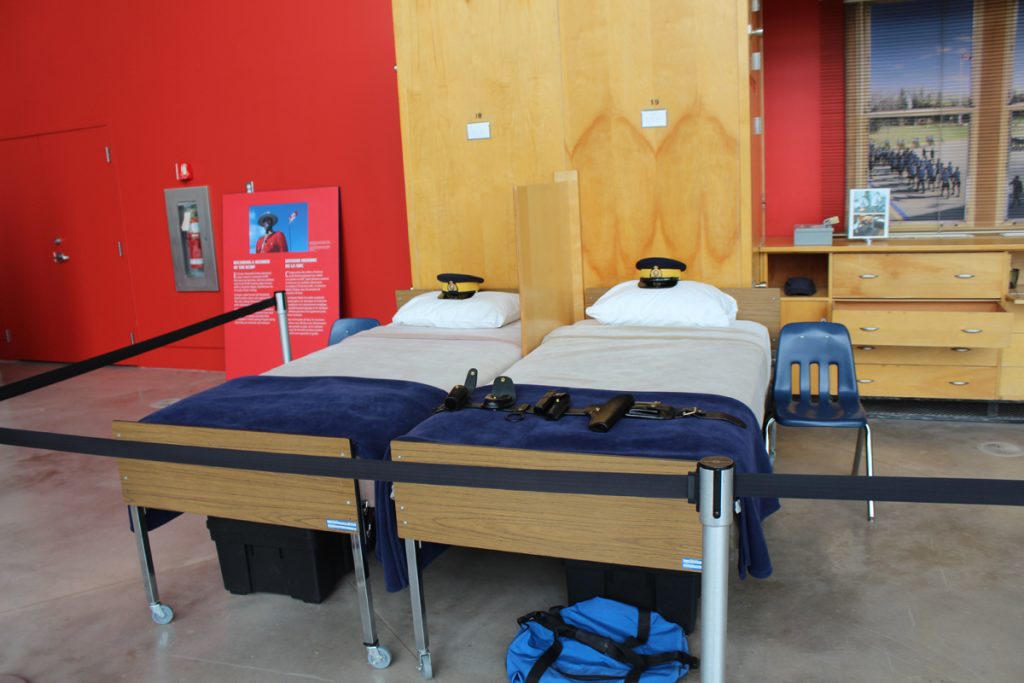
After a short while, the tram pulled up beside a very large drill ground. We all clambered out to wait for the Sergeant-Major’s Parade. This takes place five days a week from Monday through Friday at 12:30 PM.
While waiting we checked out a Beechcraft dating from 1946 on display. The RCMP has used aircraft since 1937 as its mandate includes patrolling some of the more remote areas of Canada.
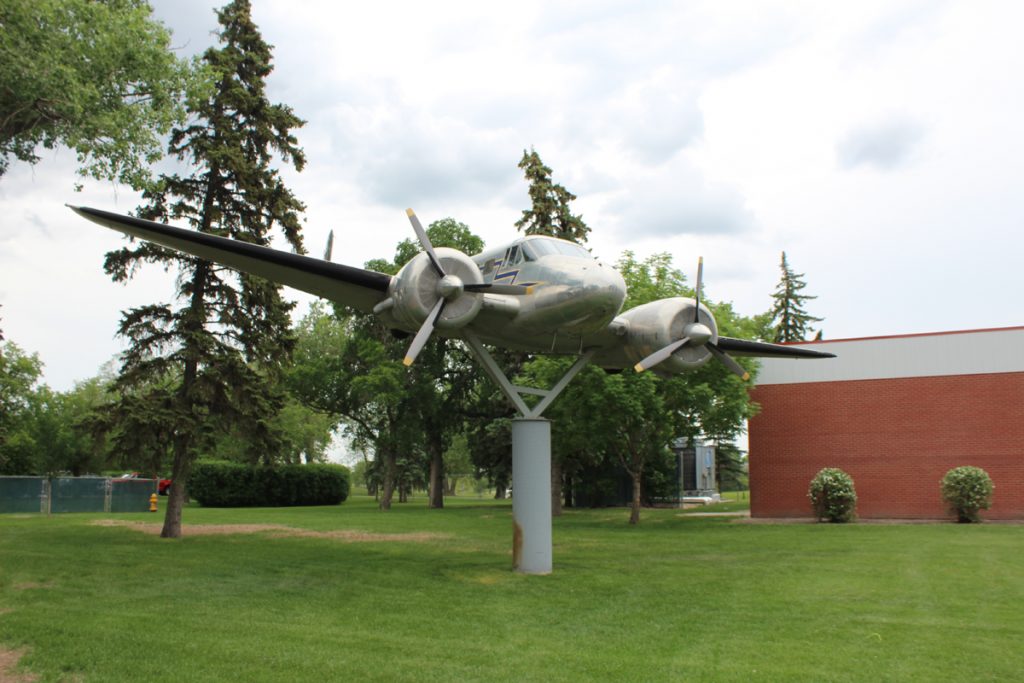
Then from our left, the parade started. This drill has the troops marching onto the parade ground and lining up for roll call and inspection. New recruits have to earn the right to wear the uniform and this right is granted in stages as they progress through training. New recruits, for example, wear running shoes instead of the dress black shoes of the uniform and they have to run rather than walk while on parade. Even the stripes on the Mounties pants have to be earned. The parade is led by a marching band made up of volunteers. The newer recruits bring up the rear. The video below shows the troops marching off the field after inspection.
After the parade we checked out the chapel nearby. This is the oldest remaining building in Regina, built as a mess hall in 1883. It was converted into a canteen and reading room in 1889. It was partially damaged by fire in March 1895 and reopened as a chapel in December that year. It was extended and had a steeple added in 1939.
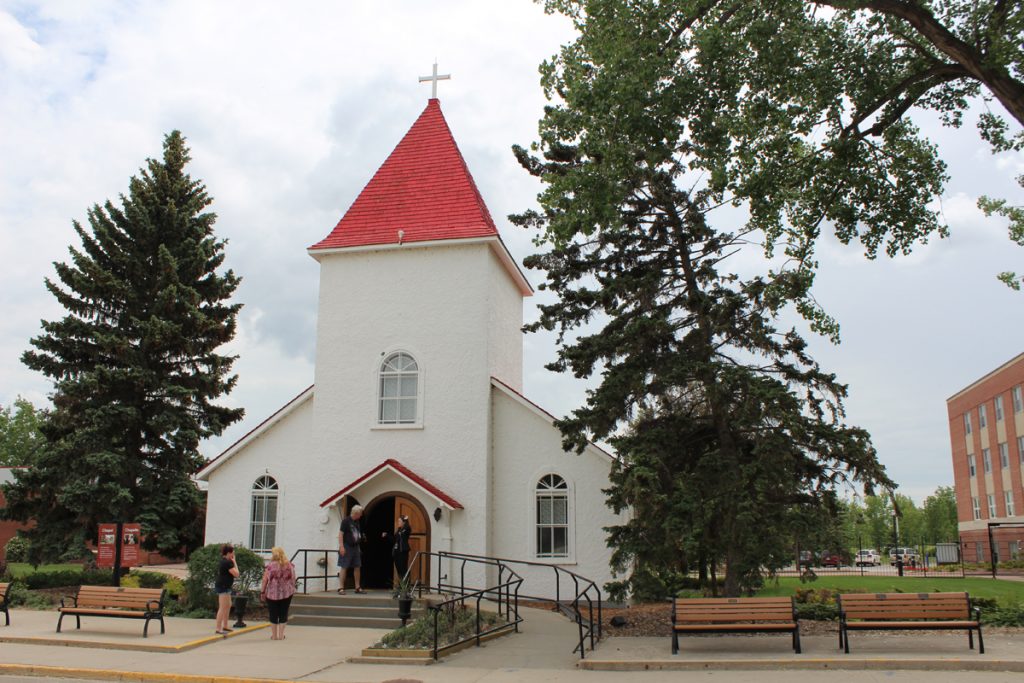
The interior is amazing – lush woodwork all around with stained glass windows along the sides and in the back. The windows in the back show two Mounties, one with head bowed mourning a fallen comrade, and the other playing reveille on a bugle.
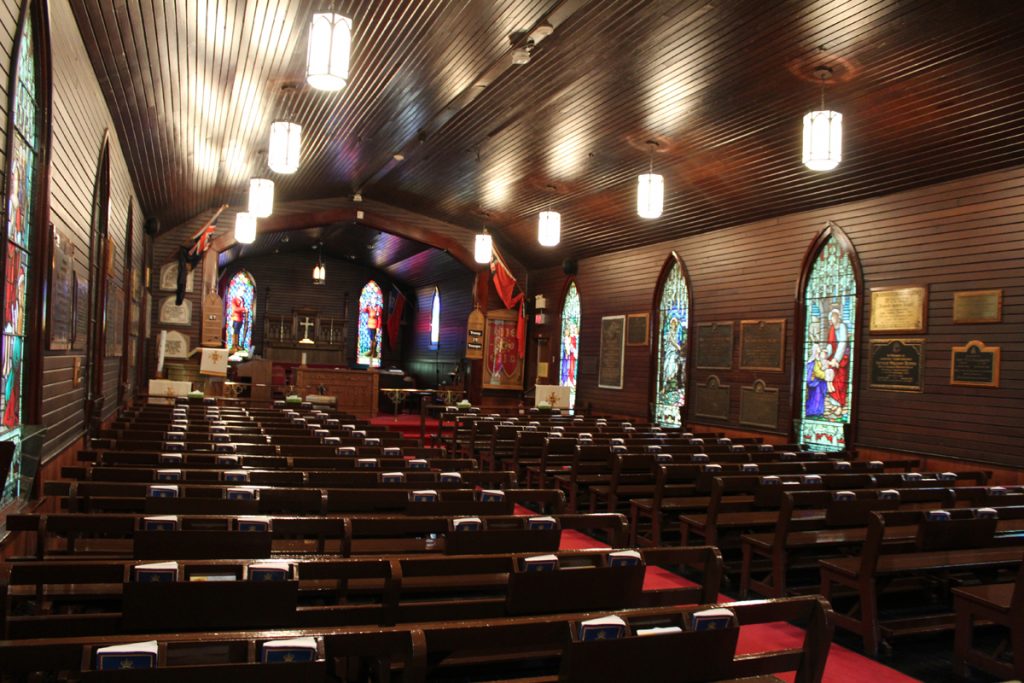
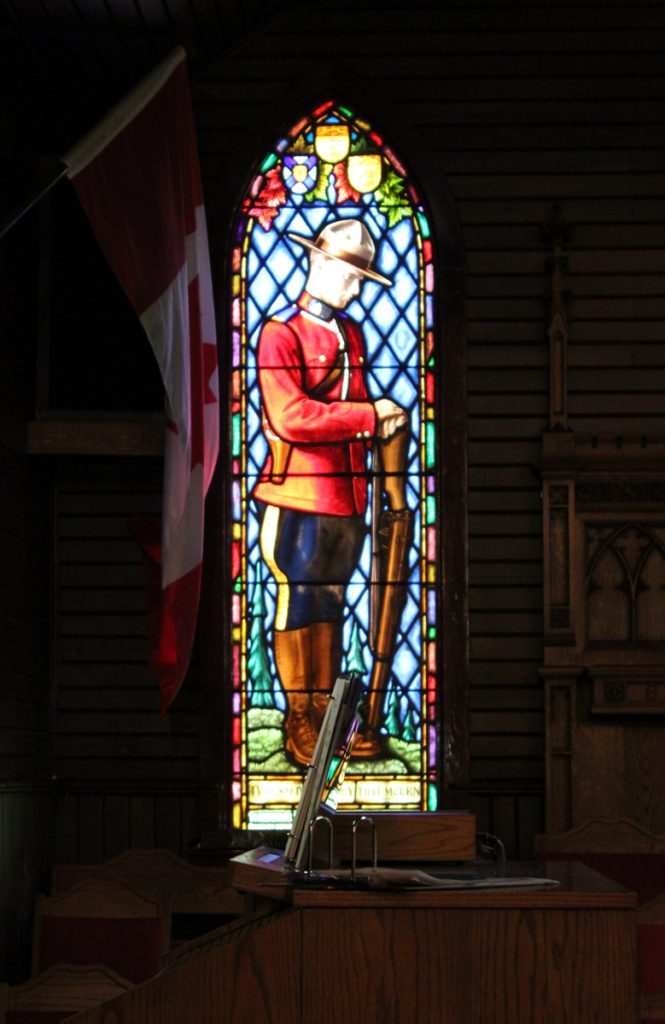
Our guide told us that much of the work on extending the chapel was financed by a $30 million bequest from a wealthy British woman. She had never been to Canada and never actually met a Mountie. But she became enamored of the Mounties after seeing a Hollywood movie about them.
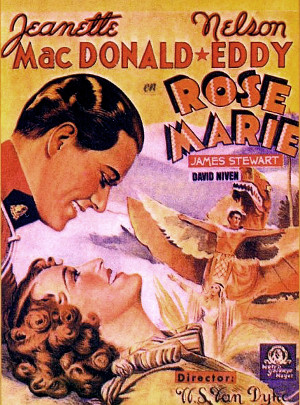
We got back in the tram which toured us around the facility. We were asked not to take pictures of Mounties actually training. We did see one group practicing a take-down.
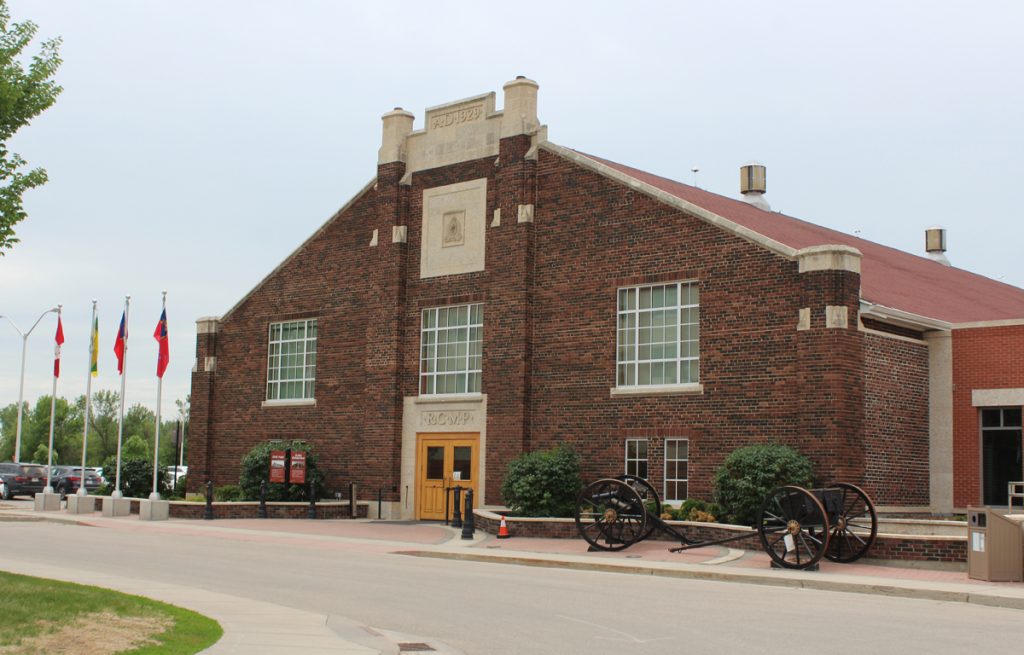
One of the classic old buildings is the Drill Hall. Built in 1929, it first served as a riding school. But horses were replaced by cars eventually and today the hall is used for foot drill and crowd control training. It also hosts the Mountie Graduation ceremonies and the occasional Regimental Ball.
We passed a shooting range and a driver training track as well.
Our trip brought us back to the Heritage Centre where we continued our tour. Saskatchewan became a province in 1905. Before that it was part of the Northwest Territories. The Mounties originated as the Royal Northwest Mounted Police.
Recently the rather left-wing mayor of Victoria, British Columbia decided to remove a statue of Canada’s first Prime Minister, Sir John A. Macdonald, from in front of city hall. She argued that Macdonald was the architect of Canada’s residential school system for indigenous children, a system that continued until 1996. The residential schools have been widely condemned for separating native children from their parents and for abuses.
There are, however, two sides to Macdonald. The museum notes that the Royal Northwest Mounted Police was established by Macdonald as a response to a massacre of native Indians by white hunters.
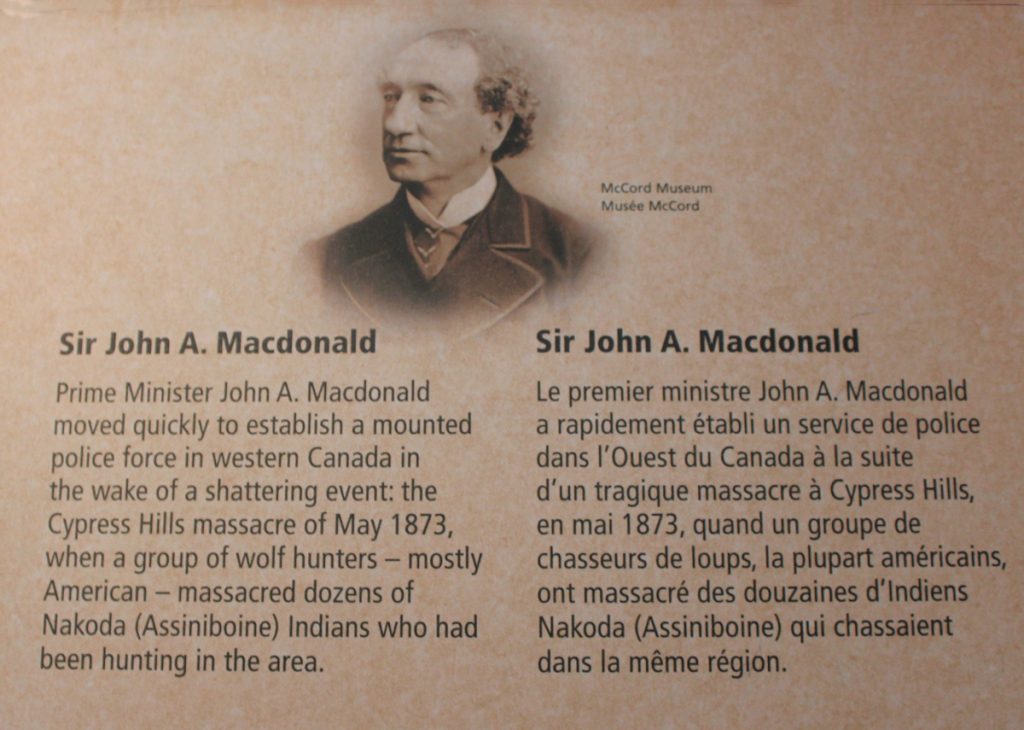
The Mounties were patterned after the Royal Irish Constabulary and one of its mandates was to foster friendly relations with indigenous peoples. After the Battle of the Little Bighorn in 1876, Chief Sitting Bull and 5000 of his Lakota tribesmen fled to Canada seeking the protection of the British crown.
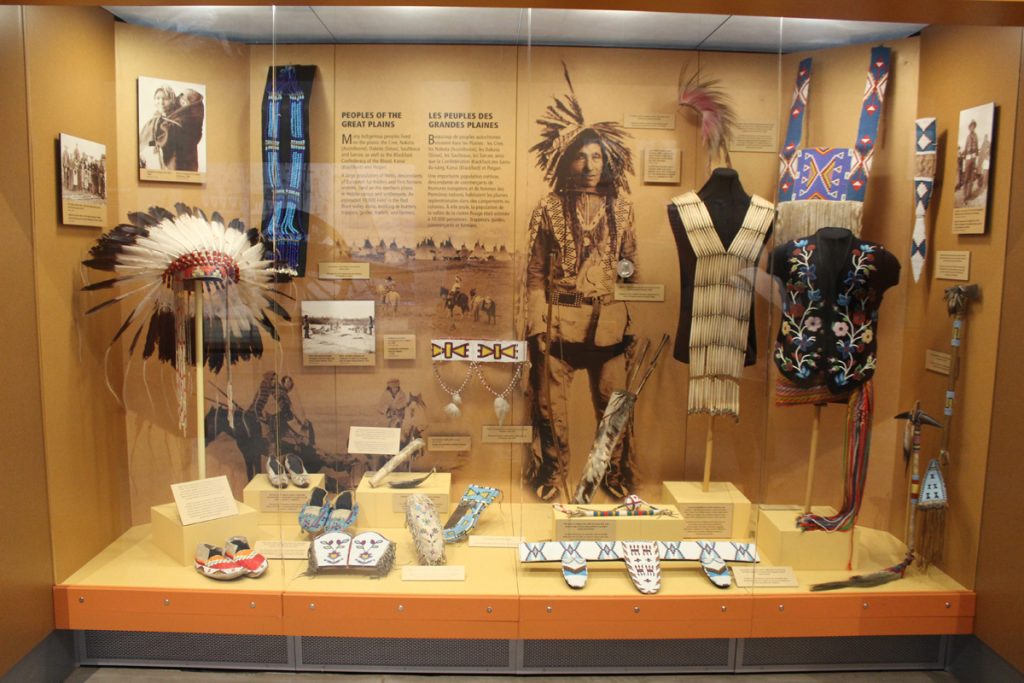
Sitting Bull became good friends with NWMP Superintendent James Walsh. Walsh established a fort at Cypress Hills and was instrumental in developing some of the first treaties with native peoples.
However, Walsh’s replacement Lief Crozier was not as friendly, cutting off the Lakota’s food supply and forcing them to return to the United States.
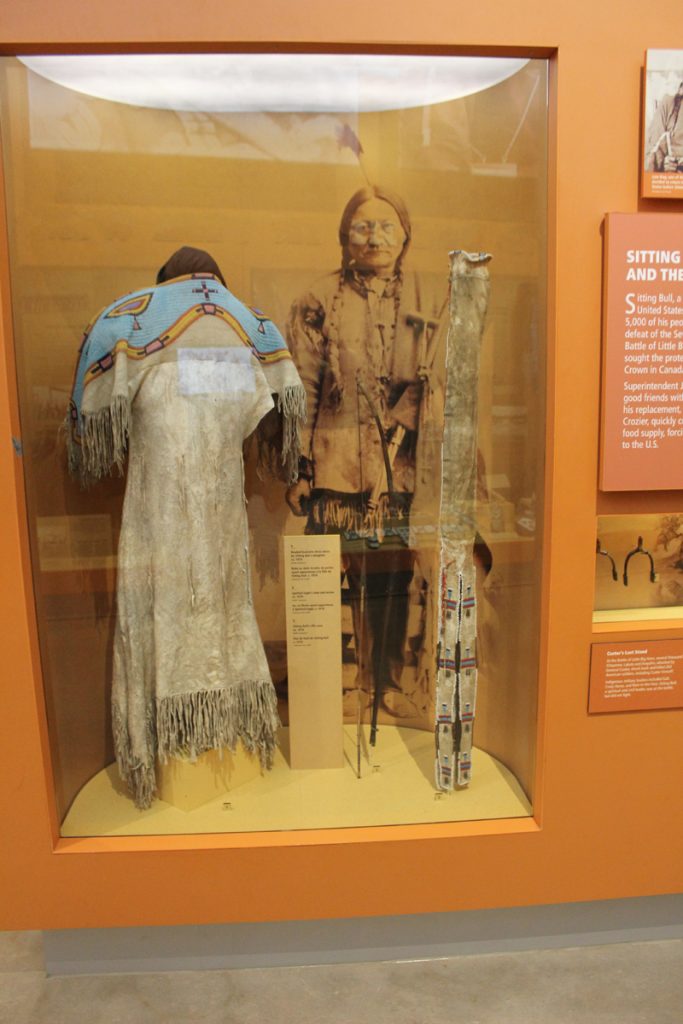
Taming the wild frontier included keeping peace and order as the Canadian Pacific Railway was built and ensuring order in the gold rush days in Dawson City. One of the legendary Mounties of the day was Sam Steele who oversaw law and order among the 4000 workers on the railway and kept peace in Dawson.
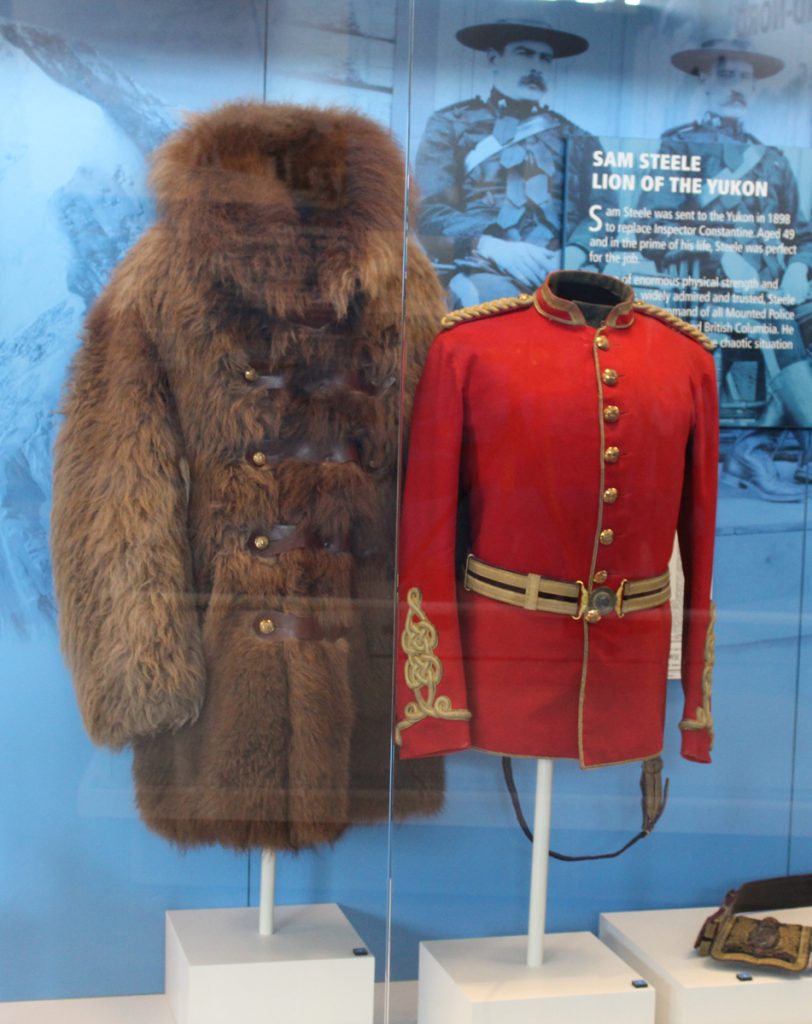
Other displays include a machine gun brought in to help control the border between the Yukon and Alaska.
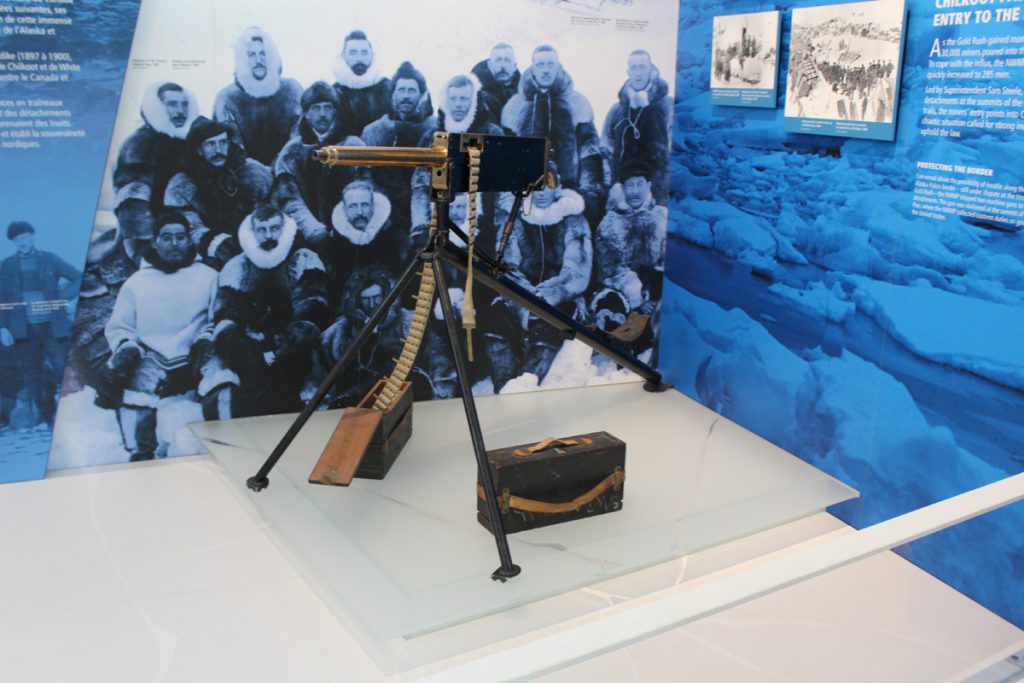
And there is a display of vehicles used over the history of the Mounties. These range from dogsled to snowmobile to the automobile. One classic car, a 1957 Meteor Rideau 500 is among the displayed vehicles.

And, of course, there is a section on the famous RCMP Musical Ride. I was surprised to learn how old the ride is. One display notes that the ride was a staple of agricultural fairs across the prairies by 1904. Discontinued during WWI, it was re-established after the war. Below is a picture of the ride in 1921.

One of the side displays is a virtual Musical Ride. You mount a saddle wearing a pair of virtual reality goggles and you find yourself jogging along with Mounties ahead of you and behind you. Lots of fun!
The Mounties are a storied part of Canadian history, a history that is well-told in this museum. There are historical artifacts galore accompanied by information boards. For gun buffs, you’ll find lots of antique weapons and what every gun enthusiast will love, a handgun lamp given to a Mountie who was a WWI veteran as a wedding gift!
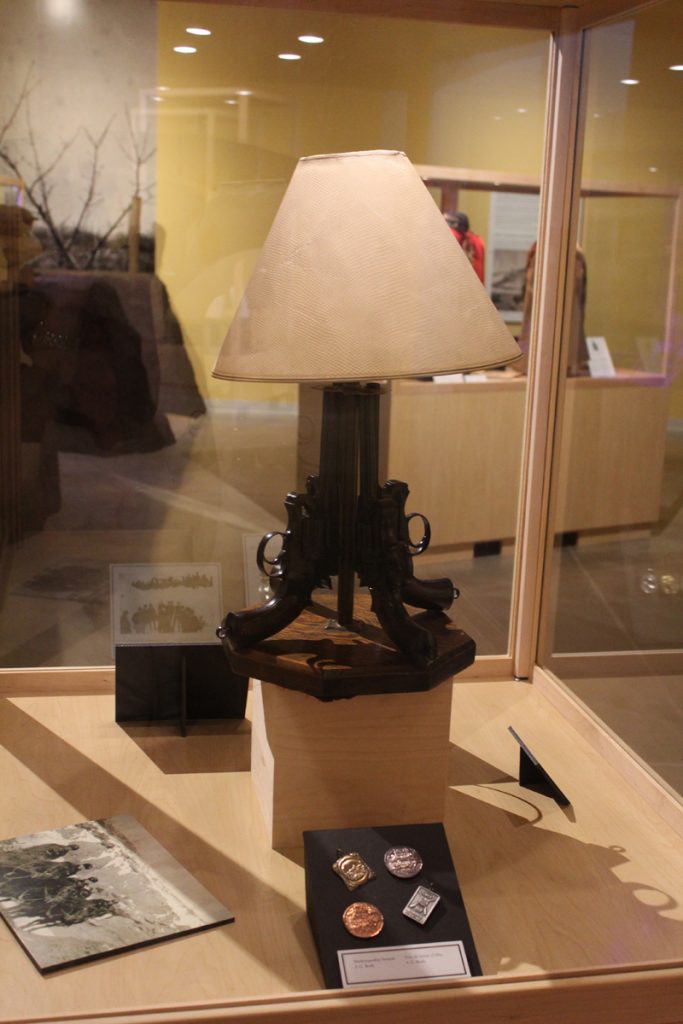
You’ll find a display detailing the solving of a murder from beginning to end. There’s information on the St. Roch, the RCMP vessel that was the first ship to circumnavigate North America. The actual St. Roch is on permanent display at Vancouver’s Maritime Museum.
We spent several hours on our visit and enjoyed every minute of it. Below are some additional links including a Photo Gallery with additional pictures.
- RCMP Depot Division and Heritage Centre Photo Gallery
- RCMP Depot Division Website
- RCMP Heritage Centre Website
- The Heart of Regina (a look at Wascana Park and the Saskatchewan Legislature)
Follow us on Facebook!
